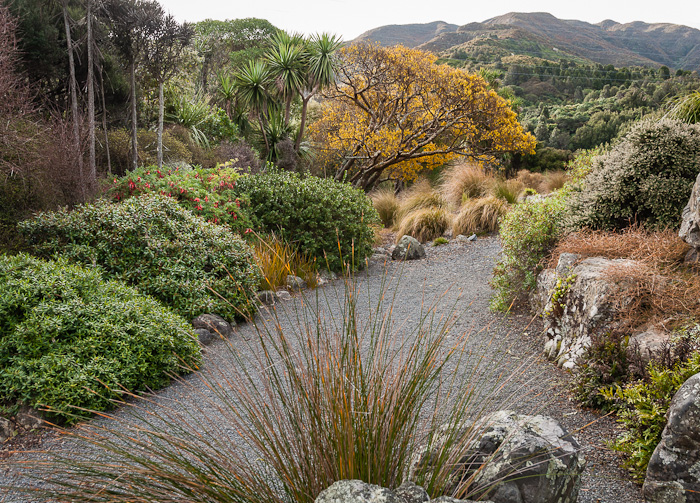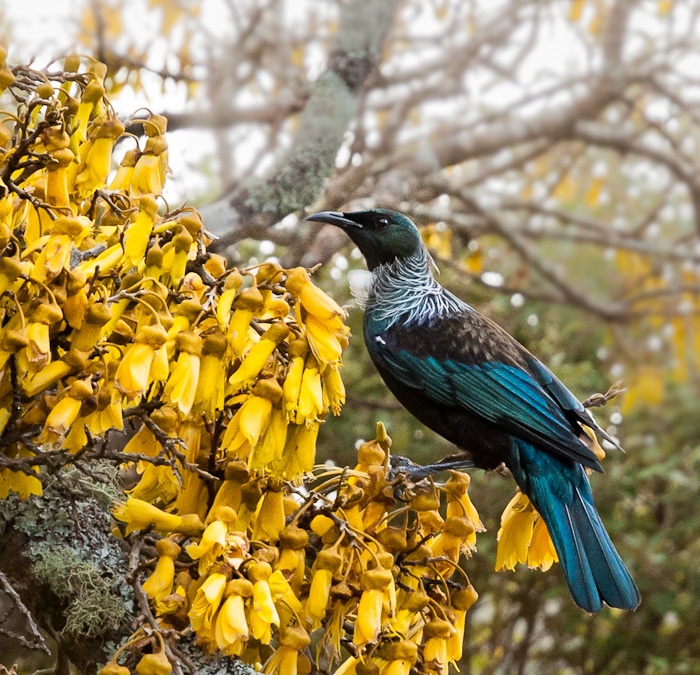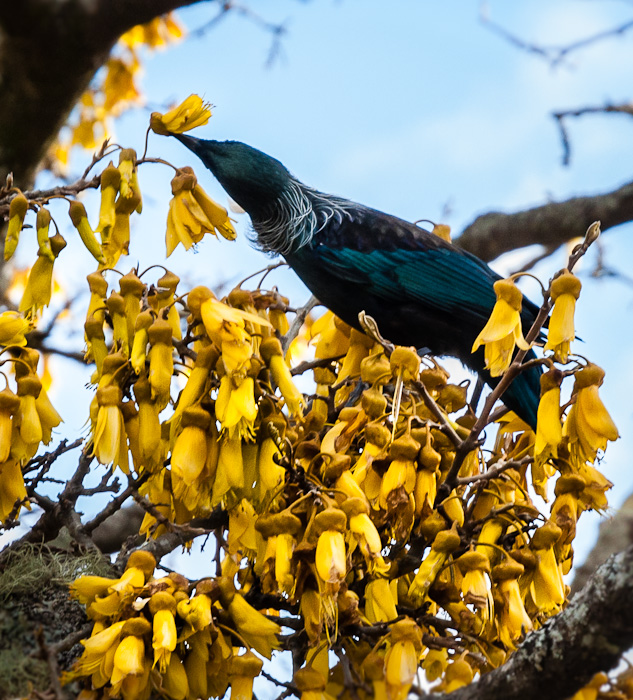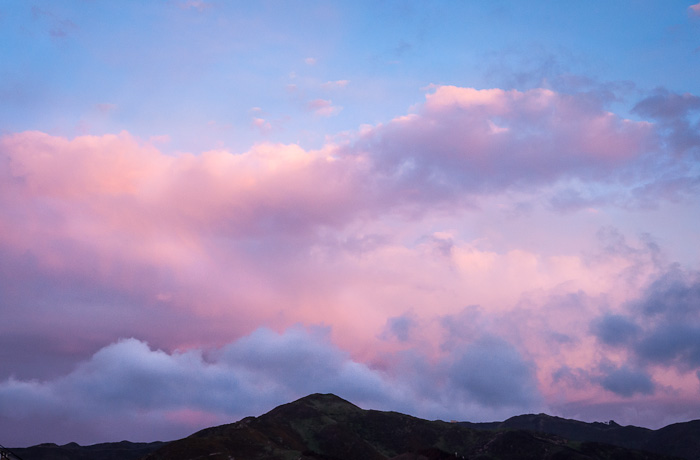Leonard Cockayne was an important early botanist in New Zealand whose work included studies of our native vegetation. One of the sites honouring his work is the Cockayne Lookout. On a terrace above a steep bank, its view covers some of the Otari Native Botanic Garden plant collections and the Wilton's Bush Reserve with its stand of original forest and extensive areas of regenerating native bush.

The tall walls of the lookout and terrace are clothed by the climbing crimson rata (Metrosideros carminea) which is a forest liane, or vine. It grows vigorously - 15 metres or more, up tree trunks and cliffs, and it spreads in the way ivy does by clinging to rough surfaces. So it can make dense cover as seen here, over the whole surface of these substantial walls. Now in full spring flower, I think it is like a crimson cloak with a thick red fringe at the top.

The flowers have a starry appearance with their long red stamens topped by golden pollen, and nectar-filled yellow centres. Before they had all opened it was easier to see the individual flowers.

This photo, taken ten days earlier, shows the tight unfurled buds and the little glossy green leaves before they were obscured by the sheer profusion of fully open flowers.
The flowering of the golden kowhai is coming to an end as the crimson rata is coming into flower. It is much appreciated by nectar loving birds and insects, and it is not hard to see why it is popular with humans too, as a most decorative garden plant.

















